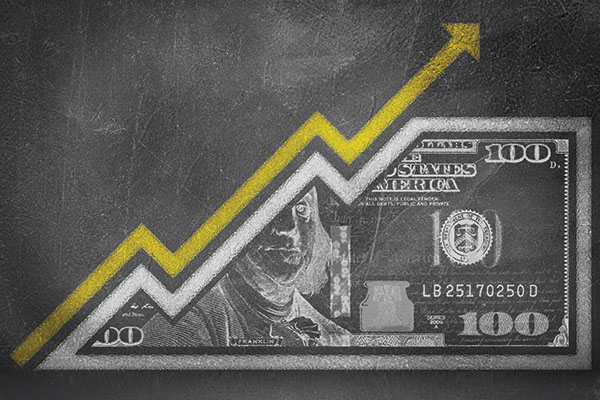UPS makes changes to its ‘Demand Surcharges’
In a recent customer notice, Atlanta-based global freight transportation and logistics services provider UPS stated it will be extending its demand-based surcharges past peak season.
UPS said that the demand surcharge will extend to packages that require Additional Handling and Large Packages for all U.S. domestic, U.S. import, and U.S. export shipments for qualifying customers. And it added that a demand surcharge will apply to all packages that are Over Maximum Limits for all U.S. domestic, U.S. import, and U.S. export shipments.
What’s more, UPS said that, effective January 15 until further notice, Additional Handling will be $3.50 per package (down from $6.50 per package, from October 30 until January 14), with its Large Package Surcharge at $40.00 per package, down from $70.00 per package, October 30 until January 14, and $0.00 for Over Maximum Limits, down from $400.00, from October 30 until January 14.
UPS said that the demand surcharges listed above will apply on a weekly basis to each package over 105% of the Baseline weekly average volume for each service level, during the Specified Demand Period. And it added that the “highest surcharge amount applicable to the volume in excess of the Baseline average in a given week will apply to all packages over 105% of the Baseline weekly average volume in that week within each service level.”
Some of the primary demand surcharges issued by UPS, regarding UPS per-package demand surcharge, based on percentage over shippers’ baseline volume, include:
- UPS SurePost Ground Residential (ending Jan. 14), at $1.25 (for 105% to 125%), $1.75 (for 125% to 150%) and $2.00 (for more than 150%;
- UPS SurePost Ground Residential (starting Jan. 15), at $0.40 (for 105% to 125%), $0.50 (for 125% to 150%) and $0.60 (for more than 150%;
- UPS Air Residential (ending Jan. 14), at $2.25 (for 105% to 125%), $2.75 (for 125% to 150%) and $3.00 (for more than 150%; and
- UPS Air Residential (starting Jan. 15), at $0.40 (for 105% to 125%), $0.50 (for 125% to 150%) and $0.60 (for more than 150%)
Jerry Hempstead, president of Hempstead Consulting, said that these charges reflect how UPS has more or less gone the same route as its main competitor, FedEx, has, in that these charges are no longer seasonal.
“They are now part of a revenue addiction that was fed by unchallenged increases announced by each carrier and the competitor upping the ante,” he said. “Because there was so much demand from the marketplace and really only two choices, shippers are forced to pay the price to service their orders. When both carriers are doing it, shippers don’t have leverage. But I am seeing in the package numbers that demand is in a rapid decline. The top line revenue number for the carriers is going to flip, the carriers can delay this somewhat with these surcharge additions, like this UPS announcement, but it will be a small band aid on an underlying gash. Once the coaster goes over the curve the shippers will be in a better position to negotiate and the carriers will be more responsive to a threat of losing a book of business. Stand by, the coaster is already on the down side of the hill.”
And Josh Taylor, Senior Director of Professional Services, for San Diego-based Shipware, an audit and parcel consulting services company, looked back to the UPS’s first quarter 2022 earnings call, when UPS CEO Carol Tomé explained her approach to pricing, saying: “Pricing is expected to remain firm, and we'll continue to price based on the value we provide to our customers.”
Taylor explained that, to some extent, he thinks most shippers understand that perceived value is a large component of how UPS sets its rates, noting that UPS is not determining how much it needs to charge, as that hurdle was cleared many surcharges ago. Instead, he said, it is testing how much it can charge before too many shippers decide to switch carriers.
“The new Demand Surcharge beginning January 15 is a textbook example of value-based pricing,” said Taylor. Calling this a ‘demand surcharge’ is a misnomer. Demand for UPS’s services is down year-over-year. But the name and format of the charge is anchored to something the average shipper has already accepted, that peak surcharges are here to stay. Promoting that acceptance took a few years. Paying a premium during the traditional peak season made intuitive sense. Swallowing additional charges during the pandemic also felt justified. In my mind, the big leap was 2022, when UPS successfully charged multiple demand/peak surcharges for the whole year, including Additional Handling and Large Package Surcharge, even when the network was not stressed.
Ultimately, Taylor explained that UPS has revenue goals to meet, and despite 2023’s historically high general rate increase (GRI), it will not meet them without more mid-year price increases.
“Like the mid-year changes to the fuel surcharge tables in 2022, the new demand residential surcharge won’t show up in the official UPS Rate & Service Guide,” he said. “Even better for UPS, shippers that qualify for the charge will actually see their rates drop on January 15th, when the higher peak demand surcharges ($1.25-$7.00 per piece) shift to the less-expensive off-peak demand surcharges ($0.40-$0.60 per piece). In this context, it’s easy to see why UPS expects most shippers will overlook this charge and assume that UPS continues to deliver the same value for their money.”













